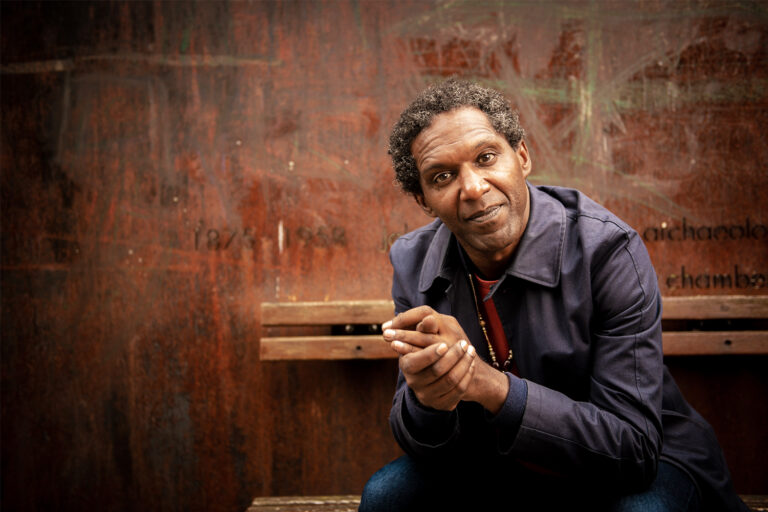Author and broadcaster Lemn Sissay MBE has collaborated with WaterAid to create a new thought-provoking poem telling the story of communities like Frat in his maternal homeland of Ethiopia, where people’s lives and livelihoods are threatened by the changing climate.
The poem, Hope Spring Eternal, is at the heart of a short film created by the international development organisation to launch its fundraising appeal, Future on Tap, which aims to raise £3 million to help transform lives with clean water in Frat and other villages around the world.
During the appeal, which runs from 5 November 2020 to 4 February 2021, the UK government will match public donations up to £2 million to help even more people in Ethiopia. The match funding will bring clean water and decent sanitation to poor families, schools and health centres in drought-prone areas in Berbere.
Many people from the villages of Frat, which  scatter the hills in the Amhara region in Western Ethiopia, moved here after being displaced by the drought of 1983-85, and through strength and solidarity have carved out a good life for themselves. However, a lack of basic facilities like clean water exacerbated by the changing climate poses insurmountable challenges.
scatter the hills in the Amhara region in Western Ethiopia, moved here after being displaced by the drought of 1983-85, and through strength and solidarity have carved out a good life for themselves. However, a lack of basic facilities like clean water exacerbated by the changing climate poses insurmountable challenges.
Families spend hours each day collecting dirty water from a river at the bottom of the hill,  which is their only option. Women and children are afraid to go alone or at night because of thieves in the area, and the dirty water causes sickness. The changing climate is making life harder. Some water sources are depleting over time, while the hotter summers and unexpected storms are destroying crops, their only source of income.
which is their only option. Women and children are afraid to go alone or at night because of thieves in the area, and the dirty water causes sickness. The changing climate is making life harder. Some water sources are depleting over time, while the hotter summers and unexpected storms are destroying crops, their only source of income.
 Nearly two thirds of Ethiopians do not have clean water close to home. The country is one of the most vulnerable to climate change – ranking in the bottom quintile of the Notre Dame Global Adaptation Initiative Country Index for its vulnerability and its readiness to improve resilience.
Nearly two thirds of Ethiopians do not have clean water close to home. The country is one of the most vulnerable to climate change – ranking in the bottom quintile of the Notre Dame Global Adaptation Initiative Country Index for its vulnerability and its readiness to improve resilience.
Lemn, who was the official poet of the 2012 London Olympics said “I’m proud to be working with WaterAid on their Future on Tap appeal and using my poetry to represent some inspiring stories from Ethiopia and bring to life the issue of water and climate change. When reading accounts from the families in Frat, I have been struck by their strength and solidarity, which has helped them overcome immense challenges. Their lives and livelihoods are now threatened by the changing climate, a global crisis impacting poorest countries the most, despite them doing the least to cause it.
“We can all help tackle this injustice by helping get people clean water. Water is life; it enables people to not only survive, but thrive, and it builds resilience to the changing climate, whatever the future holds.”



